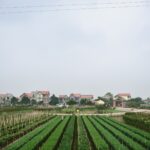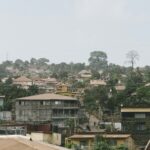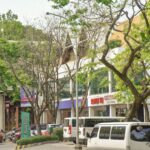How Walkable Neighborhoods Drive Real Estate Value and Community Prosperity


Photo by Nataliia Kvitovska on Unsplash
Introduction: Why Walkable Neighborhoods Matter in Today’s Real Estate Market
Walkable neighborhoods are increasingly recognized as more than just pleasant places to live-they are powerful drivers of real estate value, community engagement, and sustainable growth. As urban design evolves and buyer preferences shift, understanding the multifaceted impact of walkability is essential for homeowners, investors, and community leaders alike. This article explores the connection between walkability and property values, offers actionable steps to evaluate and enhance neighborhood walkability, and provides guidance for buyers and sellers to leverage these benefits in real estate transactions.
The Economic Value of Walkable Neighborhoods
Research consistently demonstrates that homes and commercial properties in walkable neighborhoods command a significant premium over those in car-dependent areas. According to a comprehensive study highlighted by Strong Towns, each additional point in Walk Score-a measure of how easily residents can access daily needs on foot-adds approximately $3,500 to a property’s value. Redfin data further underscores that homes within walking distance of amenities typically sell for an average of 23.5% more , or about $77,668 , compared to similar properties in less walkable areas [2] [1] . Another study found that houses with above-average walkability garner price premiums ranging from $4,000 to $34,000 , depending on the metropolitan area [4] .
The commercial real estate sector also benefits from walkable environments. The Urban Land Institute reports that a 10-point increase in Walk Score can boost commercial property values by 5-8% . Pedestrian upgrades have been linked to retail sales spikes of up to 49% and reductions in commercial vacancies by nearly half [5] .
What Makes a Neighborhood Walkable?
Walkability is shaped by several key factors, each contributing to a neighborhood’s appeal and economic value:
- Proximity to everyday amenities (grocery stores, parks, schools, retail, public transit)
- Pedestrian infrastructure (sidewalks, crosswalks, lighting, traffic calming measures)
- Mixed land use (a blend of residential, commercial, and recreational spaces)
- Public open spaces (parks, plazas, community gardens)
- Development density (compact layouts that reduce travel distances)
Each element not only improves quality of life but also translates directly into higher property values. For instance, research from the University of Chicago found that higher development density , robust pedestrian infrastructure , and a diverse mix of uses significantly increase residential and commercial property values [3] .

Photo by Alain ROUILLER on Unsplash
Real-World Examples: Walkability Fuels Demand and Growth
In several U.S. cities, neighborhoods with high Walk Scores have consistently outperformed less walkable areas in terms of home price appreciation and market resilience. For example, in New York City, targeted pedestrian and bicycle infrastructure upgrades led to a 49% increase in retail sales near improved areas-vastly exceeding the average borough-wide growth of just 3% [5] . Nationwide, data shows that walkable urban neighborhoods have weathered economic downturns more robustly and recovered faster than their car-dependent counterparts [4] .
Home buyers are increasingly prioritizing walkability, with many willing to pay a premium for the convenience, health benefits, and community engagement it provides. Similarly, businesses thrive in areas with high foot traffic, benefiting from increased customer exposure and local spending [5] .
How to Evaluate Walkability in a Neighborhood
Evaluating a neighborhood’s walkability is critical for prospective buyers, investors, and real estate professionals. Here are actionable steps to assess walkability:
- Use Walk Score : Visit the official Walk Score website and enter a property address to obtain a walkability rating. Walk Score analyzes proximity to amenities, pedestrian friendliness, and infrastructure quality.
- Visit the Neighborhood: Walk the area at different times of day. Observe the availability and quality of sidewalks, street crossings, lighting, and how easily you can access daily destinations.
- Consult Local Planning Departments: Contact your city or county planning office for information on pedestrian infrastructure, future development plans, and neighborhood improvement initiatives.
- Review Public Transit Access: Check proximity to bus or train lines, as transit options often complement walkability and enhance property values.
- Engage with Community Groups: Many neighborhoods have associations or advocacy groups focused on walkability and livability. These organizations can provide resources and updates on local projects.
If you are working with a real estate agent, request that they highlight walkable neighborhoods or filter property searches by walkability metrics. Many real estate websites and listing platforms also display Walk Score information directly in property listings.
Enhancing Walkability: Steps for Homeowners and Communities
Improving walkability not only increases property values but also fosters community engagement and resilience. Here are practical strategies for homeowners and local leaders to enhance walkability:
- Advocate for Infrastructure Upgrades : Petition local government for new sidewalks, crosswalks, streetlights, and traffic calming features. Attend city council meetings and participate in public planning sessions.
- Promote Mixed-Use Development : Support zoning changes that allow for a blend of residential, retail, and recreational spaces. Mixed-use developments encourage vibrant, walkable communities.
- Participate in Community Projects : Join or start neighborhood associations that focus on beautification, safety, and walkability. Organize clean-up days, plant trees, or create public art to make walking more enjoyable.
- Leverage Grants and Funding : Search for grants from state or local transportation and urban development agencies. Many programs offer funding for pedestrian infrastructure improvements-consult your municipality’s official website for opportunities.
- Encourage Local Business Partnerships : Work with nearby businesses to create pedestrian-friendly environments, such as outdoor seating, sidewalk sales, and wayfinding signage.
Challenges may include budget constraints, regulatory hurdles, or resistance to change. Solutions often involve building community consensus, presenting data on economic benefits, and collaborating with local government and private stakeholders. Alternative approaches can include temporary pilot projects (“pop-up” pedestrian zones) to demonstrate the benefits before committing to permanent changes.
Accessing Walkable Neighborhoods: Guidance for Buyers and Renters
For those seeking homes in walkable neighborhoods, follow these steps:
- Search property listings on major real estate platforms using the Walk Score filter or by entering preferred amenities.
- Contact local real estate agents and specify your desire for walkable neighborhoods. Agents can provide lists of areas with high walkability and guide you through available properties.
- Research school ratings, transit options, and community resources to ensure the neighborhood meets your broader lifestyle needs.
- Visit neighborhoods during different times of day to experience pedestrian activity and safety first-hand.
- Engage with residents or neighborhood associations to gain insights into daily life and future improvements.
While walkable neighborhoods may carry a price premium, the long-term benefits-reduced transportation costs, improved health, and higher resale values-often offset the initial investment. If your budget is limited, consider emerging neighborhoods that are implementing walkability improvements, as these areas may offer growth potential and increasing value over time.
Key Takeaways: The Lasting Impact of Walkability on Real Estate Value
Walkable neighborhoods offer a compelling combination of financial, lifestyle, and community benefits. For buyers and investors, prioritizing walkability can lead to stronger long-term returns and a higher quality of life. For homeowners and local leaders, investing in walkability is an effective strategy to enhance property values, attract businesses, and foster resilient, vibrant communities.
To access or improve walkable features in your area, reach out to your local government’s planning or transportation department, consult experienced real estate professionals, and participate in community initiatives. Use online tools like Walk Score, and actively engage in neighborhood advocacy for lasting impact.
References
- [1] VVCO (2023). Do Walkable Neighborhoods Boost Property Values?
- [2] Strong Towns (2020). Walkable places are growing in value almost everywhere.
- [3] University of Chicago (2012). Property values: impacts of walkable characteristics.
- [4] Cortright, J. (2009). Walking the Walk: How Walkability Raises Home Values in U.S. Cities. NACTO.
- [5] Private Capital Investors (2022). Commercial Real Estate and the Importance of Walkability.






